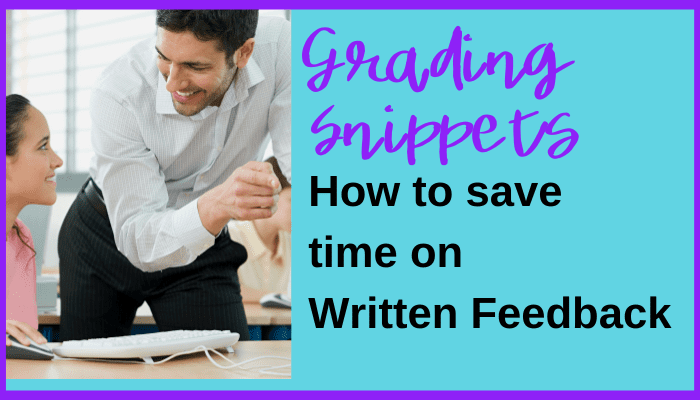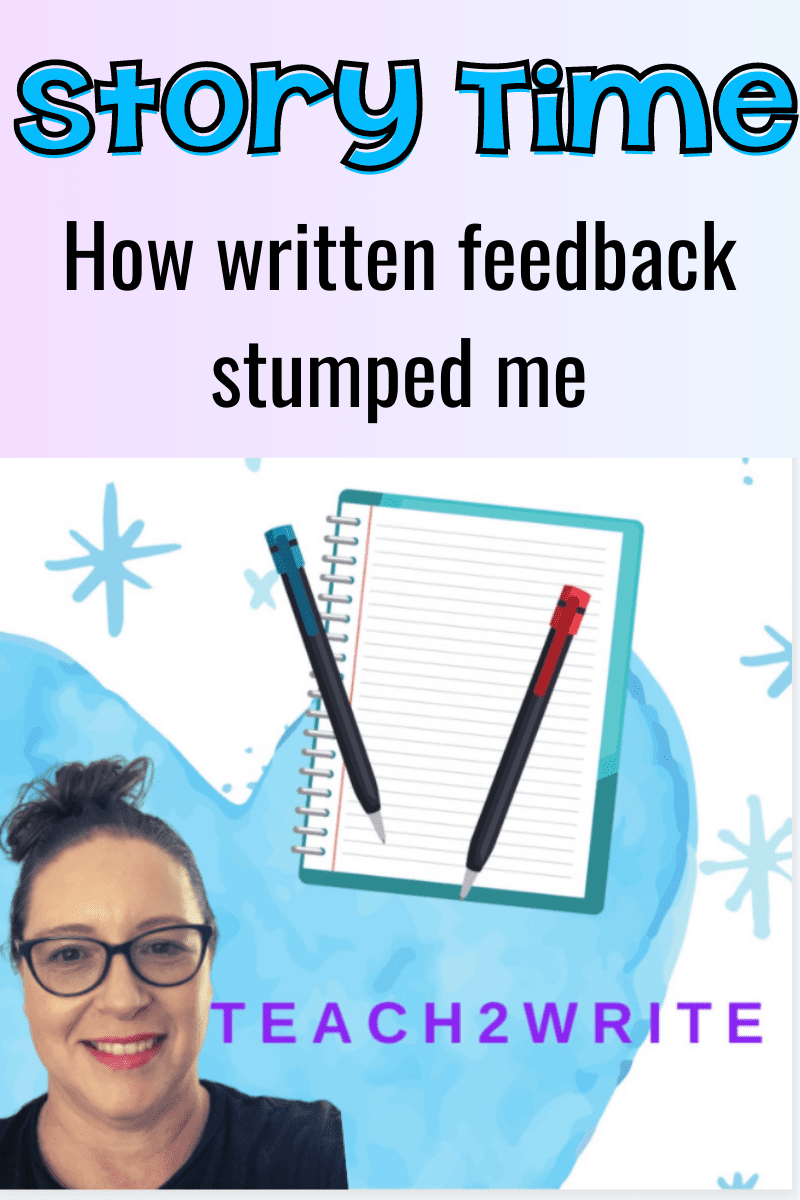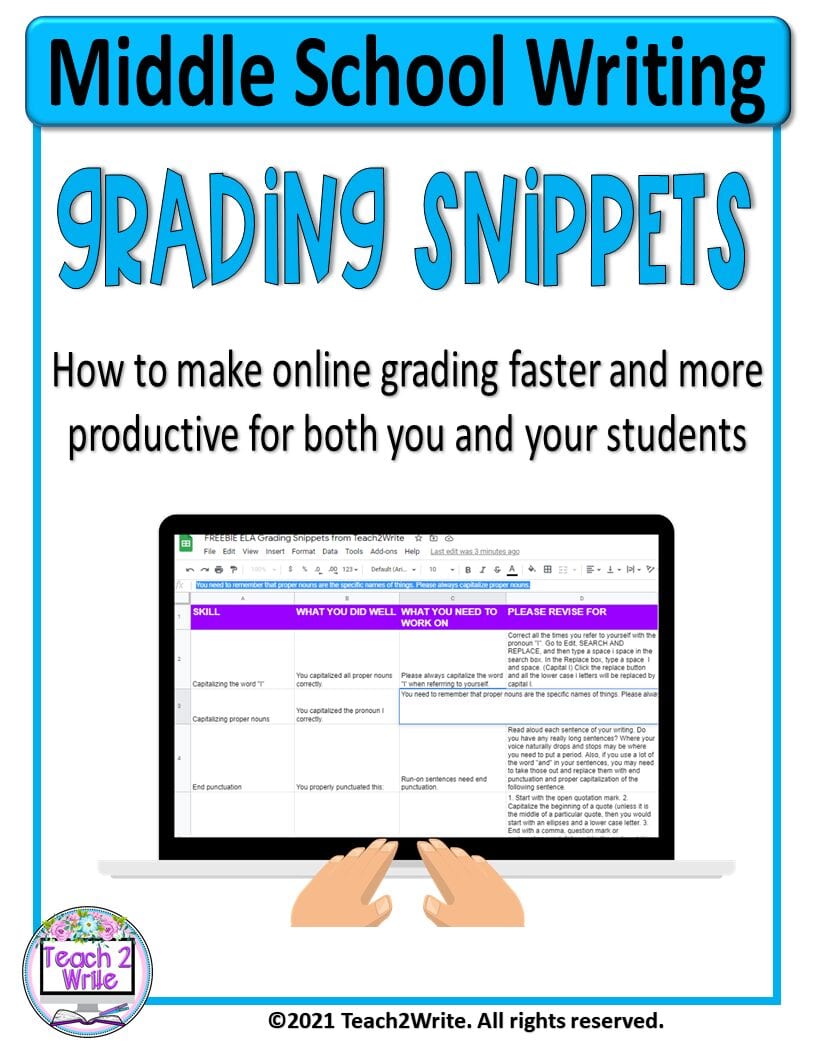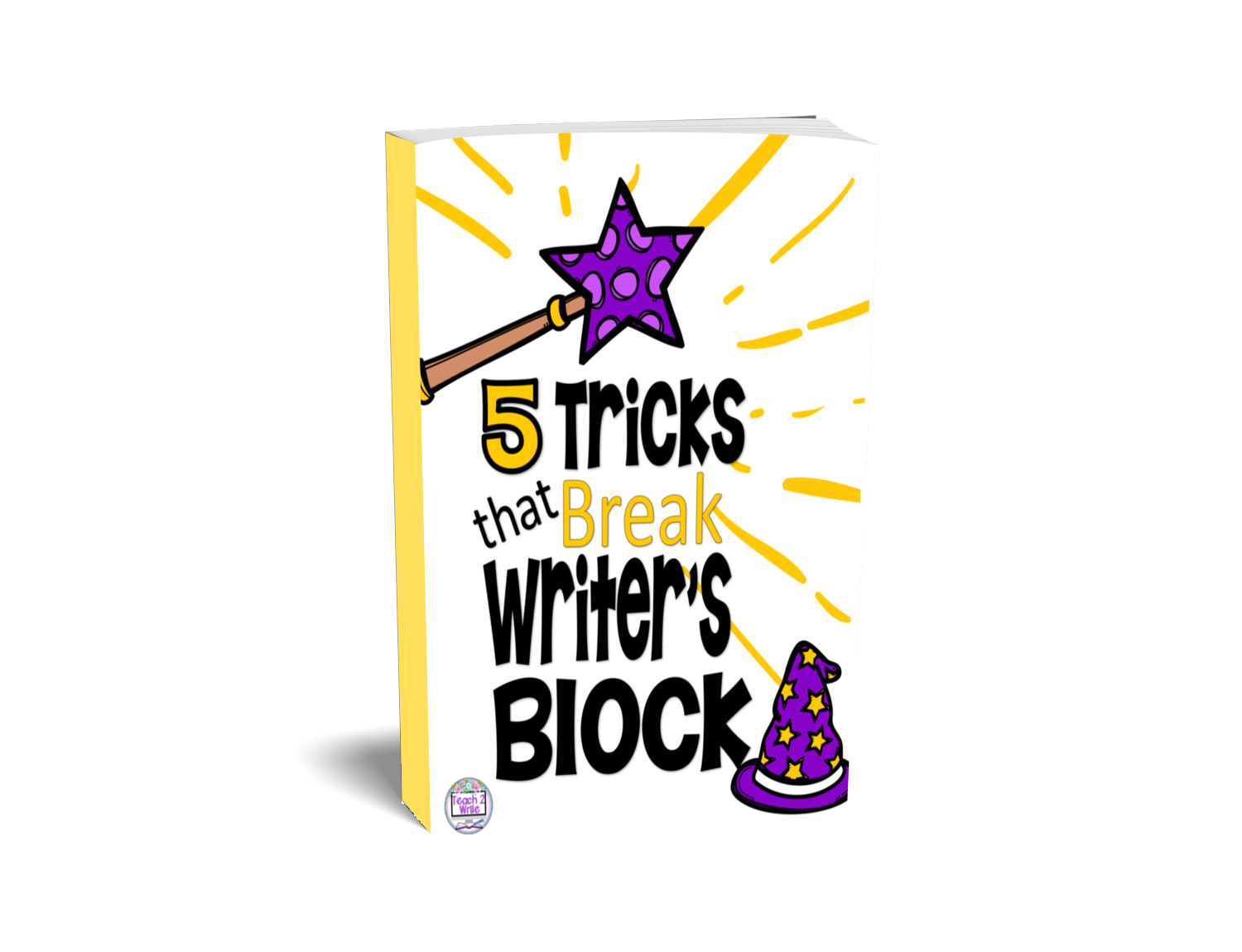Written feedback for students, especially middle schoolers, is a lot easier with grading snippets. These helpful comments, gathered into a convenient spreadsheet, make assessments of student writing faster and still personalized.
Storytime: How written feedback for students stumped me:
I’ve been teaching students through online platforms like Canvas for years. However, giving feedback always came during teacher/student writer mini-conferences. Usually, I would pull up the student’s assignment on my laptop, and then, we’d discuss ways to improve and revise the piece.
Yet, when I started teaching virtually, during Covid-ucation, I couldn’t ask my students to show me their writing in person. I couldn’t sit down at their keyboard and show them how to find and replace a lowercase “i” with the pronoun “I” in seconds. There were so many things I couldn’t do because I wasn’t physically with my students.
Side Note: My current position is in a virtual school that has all curriculum and lessons written by other people, not the teachers who are assigned to the course. My job is to read through the material, grade student submissions with written feedback, and text, call and email students (and parents) about their progress through the course.
Instead, I logged into my course to see 96 papers waiting for me in my virtual inbox. At my eschool, it’s required that teachers give feedback on every assignment.
So, I dutifully read through and commented on every post. It took me hours to type my comments. My shoulders were sore, my eyes were twitching, and then I still had to make phone calls to greet new students.
Consequently, I spent hours grading those 96 documents. Those documents represented sometimes 5-10 different types of assignments.
Even worse, my students weren’t even reading the comments!
So, I asked the other virtual teachers how they sped up this process, and they told me about grading snippets.
What are Grading Snippets?
Grading snippets are short assignment comments, or written feedback, that I can copy and paste into each student’s grading comment box. These snippets tell students what they did well and what they need to revise to improve their grade on a particular assignment.
For example, a grading snippet for a student who isn’t answering analysis questions completely could be: The first part of your answer is accurate. Please answer all parts of an essay question. To receive full credit, this answer needs…
Or here’s another example: Thank you for using specific details. Please separate those details into coherent (understandable) paragraphs. Give your reader’s eyes a break with some white space. Here’s a video that shows you how to do that…
I came across this idea from my newest position as an online teacher within my county this school year. Although I’ve been teaching online for years, I never thought to do this!
The grading snippets my online school uses are those each teacher creates and saves to the LMS system. However, it’s too clunky, and I found that creating a spreadsheet was so much faster. So, I made a spreadsheet full of comments I repeatedly make to students, based on the assignments they submit online.
I love giving written feedback with grading snippets!
Now, I want to share this idea with other teachers, especially this school year, of all school years! Therefore, I created a spreadsheet that other middle (and some high school) teachers could use.
Written Feedback for students without all the hassle:
One editable spreadsheet, organized into assignments or skills – that you can build throughout the school year, organized by:
1st column: Assignment Number and Name or Skill
2nd column: What student did well
3rd column: Student needs to revise for a higher score
4th column: Directions for how to revise
Now, when I grade or email a student about a particular assignment, I can simply copy and paste from my grading snippets spreadsheet. I can also add in more information, as needed to, individualize, and encourage students to revise.
Writing student feedback in a spreadsheet allows me to be more fluid with my comments. I can add as many assignments and comments as I want to. I can even keep other sheets within the same spreadsheet file. (Now, I teach English 1 and Journalism 1 this school year. So, I have a tab full of English 1 assignments and a tab for Journalism 1 students.)
When I come to an assignment that I haven’t created a grading snippet for, I simply add the assignment and copy and paste my written feedback to one of my students in the corresponding columns. (Most of the time, students are making the same errors.)
Sometimes my column three says: Please revise for… so I can personalize the rest of my comment for each individual student as I’m grading the assignment. However, I can copy and paste those three words faster than I can type them, especially when I’m doing it 96 times in a row.
By creating this spreadsheet, I was able to cut my grading time in half. Yes, that’s right! Instead of taking an hour to grade assignments, I could grade the same number of writing assignments, or maybe even more, in a half an hour!
6 Hacks for Getting Students to Read Your Comments
Now onto the next part of this problem – how to get students to read the feedback that I’ve been taking hours to copy and paste.
I really want my students to learn and to succeed. Some of them are perfectly happy with Cs, and so are their parents. However, I’m a huge proponent of teaching students to have a growth mindset. As a writer, I believe in the power of revision.
-
- Teach your students that first drafts usually stink. Show them evidence of this. Then show them what a draft looks like after a student used your written feedback to revise. This is a great mini-lesson for your writer’s workshop.
- Show students how to find your written feedback.
- Have students time you for how fast you open up the feedback, read its contents and improve the text. Next, have them time themselves. Make it a game.
- Make reading your written feedback and revising a class routine. Once or twice a week. (Or daily, if that works for your students.)
- Encourage, encourage, encourage. Remind, remind, remind.
- Get parents in on the action, especially for assignments worth a lot of points, or one that has multiple parts, like an essay or story.
After students have experienced this type of success a few times, some will actually read that feedback and revise without you telling them to do so! That’s when you know revision has become intrinsic to their writing and learning.
Grading Snippets made for you – written feedback you can use with your middle school ELA students for writing:
With all this talk about grading snippets and written feedback, would you like me to share some of mine? I would love to get you started with this time-saving, grading hack.
So, I created a grading snippets file for you! My Valentine’s Day present to other writing teachers! (It’s not as good as a heart full of chocolates, I know!)
With a simple copy and paste, you can pop that feedback into each student’s grade comment box for any writing assignment. Even better, it’s completely editable, so you can add to it and delete from it to make it more valuable to you and your students.
To get a free spreadsheet of grading snippets for ELA middle school writing, click here.
Transform your Writers!
5 Tricks that Break Writer’s Block Resources
Teaching writing doesn’t have to be complicated or take hours of grading. In fact, teaching students these 5 writing tricks, helps cut wasted time from late work, revision and grading!
These resources are my TOP FIVE writing strategies that I use with my students nearly every day throughout the school year. These strategies give my students and I the proven results of higher quality writing, less late work and less revision.








